By continuing your visit to this site, you accept the use of cookies.
Learn + I agreeRisks
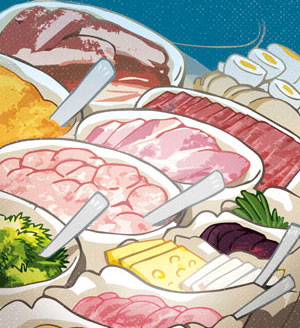
« Alimentary, my dear Watson »
Foodborne germs can cause an intoxication (food poisoning) or an infection. But what is the difference?
In the case of an intoxication, the germ produces a toxin that makes us sick. In the case of an infection, the germ itself is in our digestive system. In both cases, symptoms are similar: stomachache, vomiting, cramps, and diarrhea. However, there is one difference: for food poisoning, symptoms appear within a few hours of eating, but for an infection only 8 to 24 hours after.
For foodborne infections, the main agents are viruses (Enterovirus, Norovirus) and the infection is harmless. Bacterial infections can be more serious and are mainly caused by Salmonella enterica, Campylobacter jejuni, Listeria monocytogenes, or Shigella bacteria.
Meat or fish can also contain small live larvae of parasitic worms that can develop in our gut and cause bloating and even abdominal pain. These parasites are, for example, beef or pork tapeworms, such as Taenia saginata or Taenia solium or fish worms Diphyllobothrium latum.
Risks : ask for the menu !
What are the most risky food and the least safe behavior?
- Eggs. Can contain bacteria such as Salmonella. In low quantity, it is not an issue,. However, the bacteria get to freely multiply, so be careful!
It is risky to eat raw eggs if the cold chain was not scrupulously respected. Pick eggs that are fresh to make your raw egg meals such as mayonnaise or chocolate mousse and always keep them in the fridge.
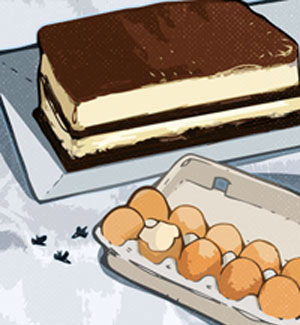

- Pork meat. It can carry live tapeworm’s larvae (Taenia solium) which will be destroyed when cooked. You should cook your pork chops very carefully, especially on the grill and don’t eat raw bacon. Raw beef and fish (tartarsrare cooked burgersand sushi) can also contain tiny tapeworm larvae: carefully check their freshness!
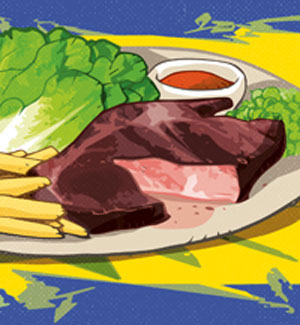
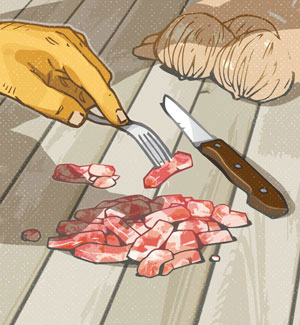
- Chicken. Chicken meat can have bacteria such as Salmonella (as eggs) and Campylobacter jejuni. Infections from this bacterium happens increase with the grilling season and at the end of the year, during meat fondue season. It is a real risk to eat under cooked chicken. Putting raw chicken or its juice in contact with other raw such as salads or sauces can be a risk too. Keep separate cutting boards for meat and veggies.

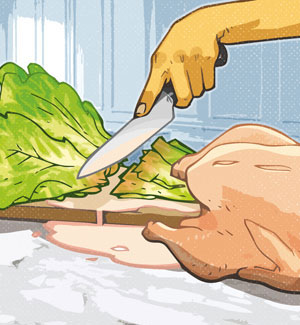
- Cheese and cold cuts. These foods can contain some Listeria. Once again, it is the number of bacteria that will be a problem, and in this case, Listeria can multiply even if the food is kept in a fridge. In the past, small outbreaks happened among the Mont-d’Or Vacherin consumers, a soft cheese made with raw milk. Other food products linked to Listeria outbreaks are ice cream, cold cuts, sprouts and bagged-salads. So do not eat these products unless they are fresh and you should prefer cheese made out of pasteurized milk.
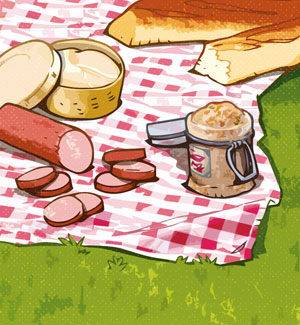
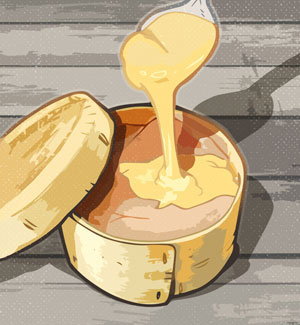
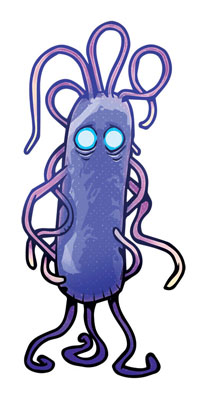
Pregnancy
Food infections can go beyond digestive problems. Some germs found in food can cause more serious diseases. For example, Listeria monocytogenes can cause meningitis, or a placenta infection in pregnant women, leading to a miscarriage. This is why pregnant women are advised to avoid certain type of food during pregnancy.
The bacteria species enterohemorrhagic E. coli (EHEC) is transmitted to humans through the consumption of raw food (meat, fruits, vegetables), contaminated by infected animal’s excrement. This bacterium can cause severe bloody diarrhea, which can even be fatal. This bacterium makes quite a bit of noise when it causes outbreaks.
